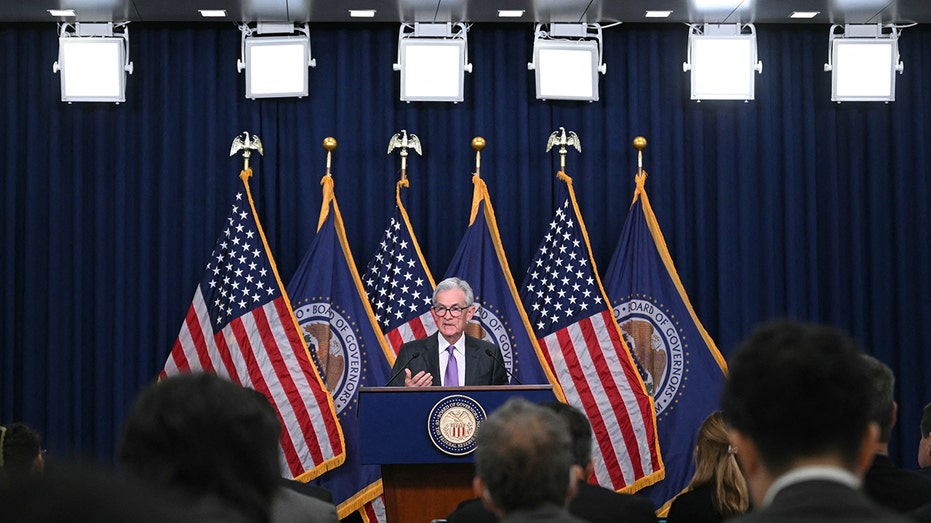Fed holds rates steady as inflation casts doubt on future cuts
Fed keeps interest rates unchanged as inflation pressures rise again
Fed must 'thread the needle' to avoid a rate hike: Alicia Levine
BNY Mellon Wealth Management head of investment strategy Alicia Levine discusses what it will take for the Fed to hike interest rates on 'Making Money.'
The Federal Reserve on Wednesday held interest rates steady for the sixth straight time after a string of disappointing inflation readings dimmed the odds of cuts later this year.
The widely expected decision — which left interest rates unchanged at a range of 5.25% to 5.5%, the highest level in 23 years — comes amid signs that progress on inflation is stalling, or even starting to reverse.
In their post-meeting statement, policymakers left the door open to rate cuts but stressed they need "greater confidence" inflation is coming down before easing policy.
"In recent months, there has been a lack of further progress toward the committee’s 2 percent inflation objective," the statement added.
HOME PRICES SURGE TO ANOTHER RECORD HIGH IN FEBRUARY

Federal Reserve Chair Jerome Powell holds a press conference at the end of the two-day Federal Open Market Committee meeting at the Federal Reserve in Washington, D.C., on March 20. (Mandel Ngan/ AFP via Getty Images / Getty Images)
Updated quarterly projections laid out after the Fed's March meeting show that a majority of Federal Open Market Committee officials expect rates to fall to 4.6% by the end of 2024, suggesting that there will be at least three quarter-point rate cuts this year.
Since then, many central bank officials have cast doubts on those projections, following worse-than-expected inflation reports in January, February and March.
While inflation has fallen considerably from its peak, progress has largely flatlined since the summer. The Fed's favorite gauge shows that inflation is running at a 2.7% pace — well above the central bank's 2% goal. When excluding food and energy, underlying core inflation came in even hotter at 2.8%.
"Readings on inflation have come in above expectations," Chair Jerome Powell told reporters at a press conference in Washington, D.C. "It is likely that gaining such greater confidence will take longer than previously expected."
THE SILVER LINING OF HIGHER INTEREST RATES: SAVINGS ACCOUNT RATES
Policymakers raised interest rates sharply in 2022 and 2023 to the highest level since the 1980s in a bid to slow the economy and cool inflation. Officials are now grappling with when they should take their foot off the brake.
Most investors now expect the Fed to begin cutting rates in September or November and are penciling in just two reductions this year — a dramatic shift from the start of the year, when they anticipated six rate cuts beginning as soon as March.
Hiking interest rates tends to create higher rates on consumer and business loans, which then slows the economy by forcing employers to cut back on spending. Higher rates have helped push the average rate on 30-year mortgages above 8% for the first time in decades. Borrowing costs for everything from home equity lines of credit, auto loans and credit cards have also spiked.
Yet the rapid rise in rates has not stopped consumers from spending or businesses from hiring. The labor market is continuing to chug along at a healthy pace, with employers adding 303,000 new workers in March. Job openings remain high, and the unemployment rate is hovering around 3.8%.
| Ticker | Security | Last | Change | Change % |
|---|---|---|---|---|
| I:DJI | DOW JONES AVERAGES | 39881.18 | +323.07 | +0.82% |
| I:COMP | NASDAQ COMPOSITE INDEX | 16739.595054 | +228.42 | +1.38% |
| SP500 | S&P 500 | 5304.41 | +57.73 | +1.10% |
GET FOX BUSINESS ON THE GO BY CLICKING HERE
Still, Powell ruled out the likelihood of another rate hike on Wednesday, despite the resilient economy and the recent setback in inflation.
"I think it's unlikely that the next policy rate move will be a hike. We don't see evidence that policy isn't restrictive," he said. To raise rates again, the Fed would need "persuasive evidence" that policy is not restrictive enough.
Stocks moved higher after Powell cast doubt on additional rate hikes, with all three major indexes rising.
